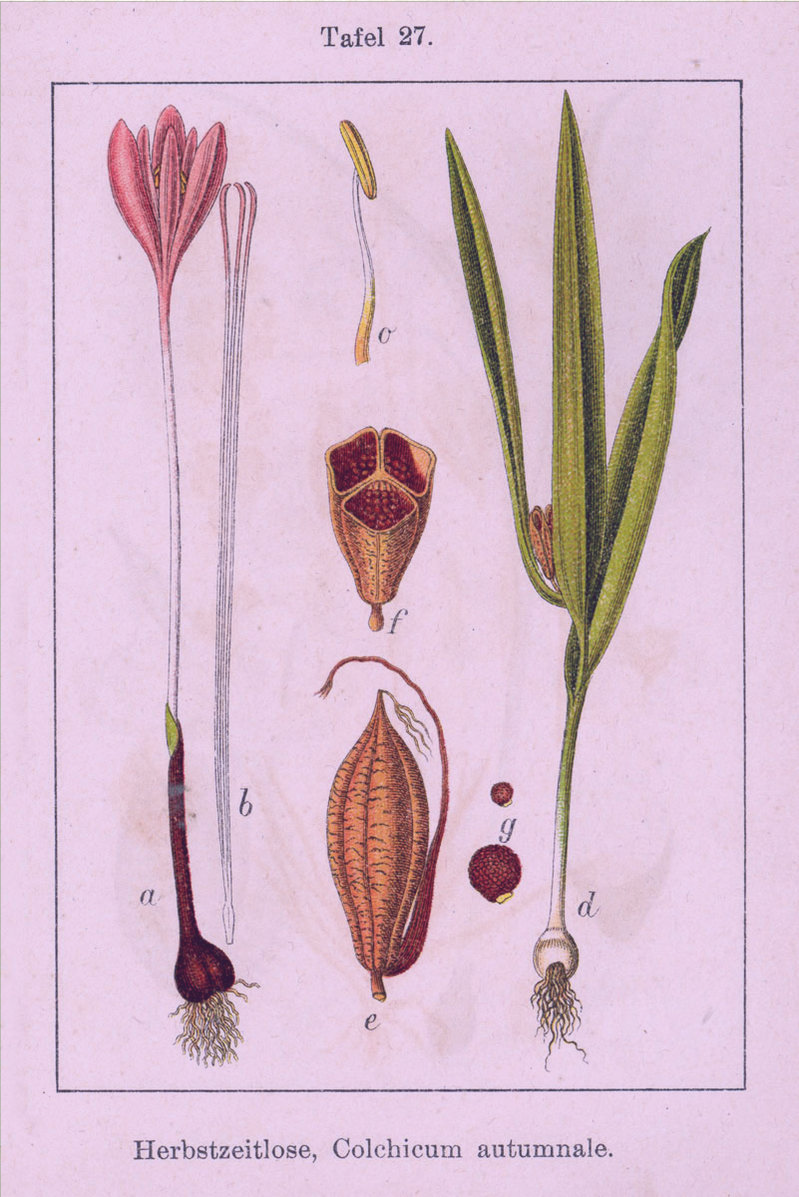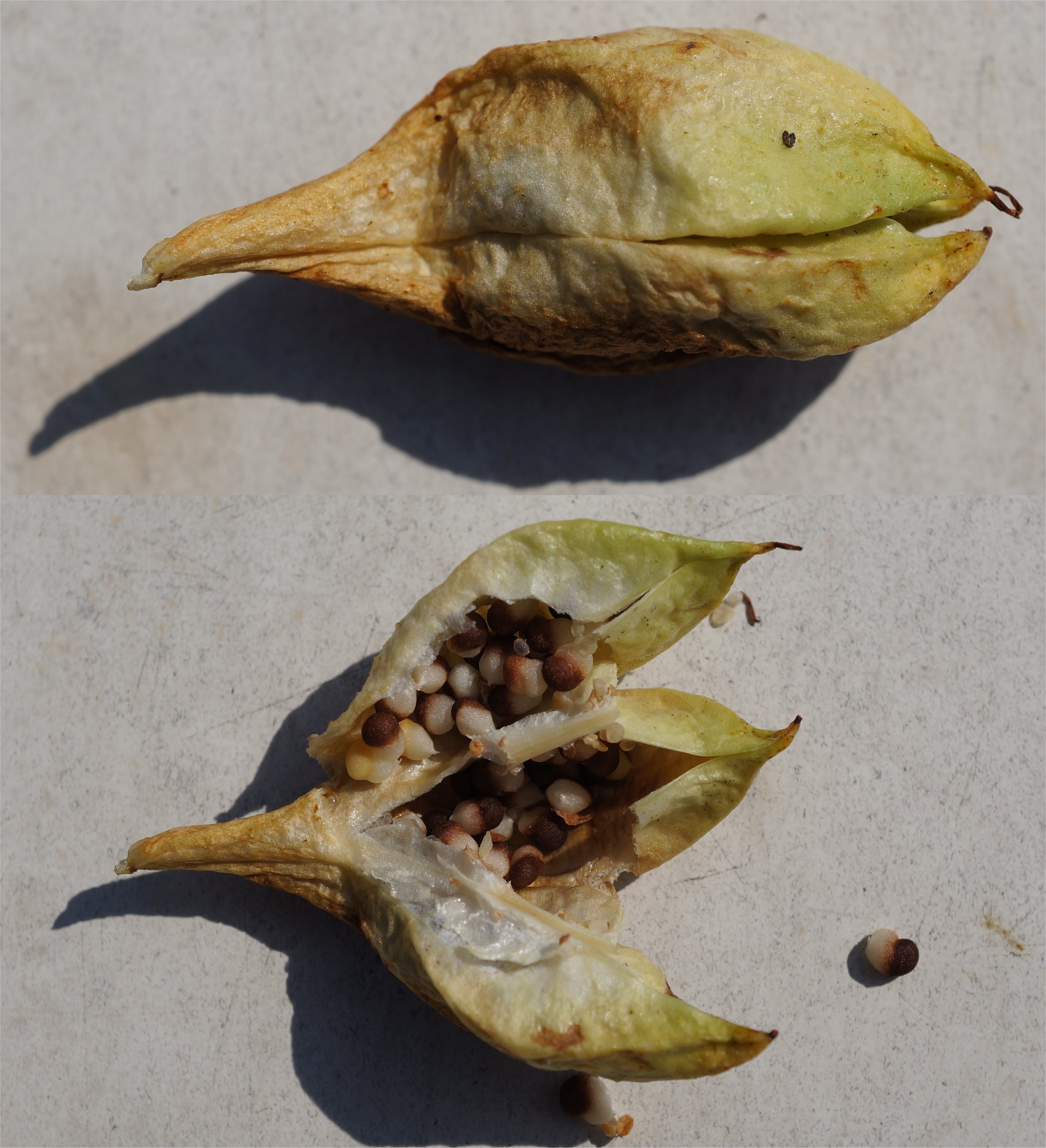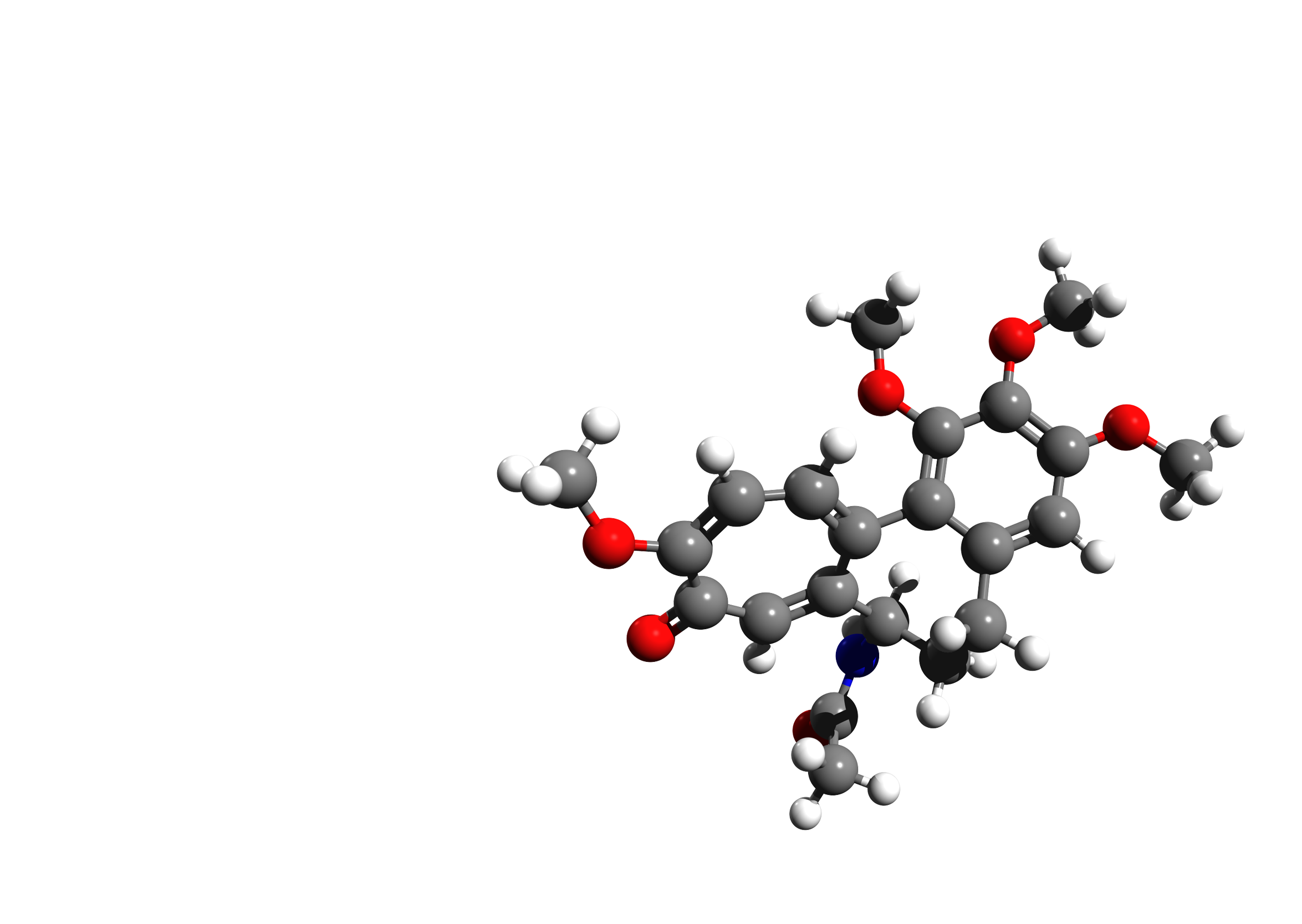
In the Middle Ages I was seen as a magical herb. If you carried my bulb you were protected against toothache, and also against the dreaded plague.
In folk medicine I was also used to treat jaundice. No wonder they called me ‘levensbloem’ (flower of life). Ironically, I’m actually very toxic; a few grams of my seeds could easily kill a child.

People used to use my seed pods as a baby’s rattle, because the little seeds inside made a funny noise when the pod was shaken. Very dangerous, of course!

The toxin in my seeds, and also in my bulb and flowers, is called colchicine. It’s an alkaloid that interferes with cell division. If you eat too much, then to start with you can count on symptoms like diarrhea, stomach-ache and vomiting – worrying, but not immediately life-threatening.
The real trouble only starts after one to seven days: heart failure, kidney failure, liver failure and fits. Eventually your lungs stop working. And there’s no antidote.
Even so, small doses of colchicine can also be beneficial. It’s sometimes prescribed for gout (the painful inflammation of a joint) and sometimes for inflammation of the pericardium.
Patients who have already had one heart attack run less risk of a second if they take a pill containing half a milligram of colchicine every day.
But they have to be careful: there’s only a small difference between a therapeutic dose and a deadly one!